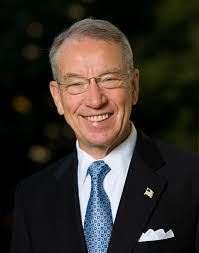Wounded Warrior Project (WWP) inaccurately reported the percentage of donor funds spent on program services – particularly long-term support for veterans – and its use of joint cost allocations (JCA) though legal under the tax code, was questionable, according a key U.S. senator who reviewed the charity after its spending practices were questioned last year.
WWP also spent “excessive amounts” on employee travel expenses and lacked sufficient policies and procedures to manage the organization. But while the charity also spent excessive amounts of donor funds on administrative and fundraising events, executive salaries were reasonable, Sen. Charles Grassley (R-Iowa) said in a memo released today.
Fourteen months after initially requesting information from WWP about spending and management issues raised in media reports, Grassley released a memo detailing his findings. The chairman of the Senate Judiciary Committee directed the 15-page memo to members of the Senate Judiciary and Finance committees and it includes nearly 500 pages of supporting documents, some made public for the first time, including the independent review commissioned by WWP.
The Jacksonville, Fla.-based charity recently filed its most recent Form 990, which revealed a 20-percent drop in revenue for the fiscal year that ended in September and drastic cuts to expenses, particularly online and direct response television (DRTV). The organization reported $322 million in revenue compared with $398 million the previous year. In the aftermath of January 2016 stories by The New York Times and CBS News, WWP commissioned an independent review of its policies and procedures and eventually fired Chief Executive Officer Steven Nardizzi and Chief Operating Officer Al Giordano.
“It’s good news taht the Wounded Warrior Project used negative findings to try to turn itself around,” Grassley said. “Some high-profile charities do the opposite when confronted with problems. They hunker down instead of embracing their responsibilities to the donating public and the taxpayers,” he said.
Grassley praised the current leadership for being “open, transparent, and responsive” to his inquiries. “Changes made thus far by WWP illustrate that oversight works to bring about adjustments that result in more transparency for the donating public. WWP is rightly focused on making changes, but, more must be done,” he said, calling on the organization to set a good example on transparency and accountability for other nonprofits.
WWP routinely said it spent almost 81 percent of program expenses on veterans, a figure that Grassley classified as “misleading” because if it included donated media and millions of dollars for fundraising. He cited 68 percent as a more accurate figure and said the organization should better explain how it calculates program expense percentages.
The use of joint cost allocations can be a contentious one among nonprofit fundraisers. Charity Navigator, often cited as a go-to source on program expense ratios, for a time had not included JCA as part of its charity ratings and has since offered an exemption to charities on its policy.
WWP will no longer base the percentage on its consolidated financial statements, which yielded the 80.6 percent figure, and instead use the Form 990, which does not count donated media as a program expense.
“Although the tax code allows WWP to claim these engagements as program expenses, the endeavor is actually more fundraising in nature than a benefit to veterans. As such its use skews WWP’s reported program expenses,” Grassley said, citing as an example a direct mail acquisition piece that appeared to be “wholly fundraising in nature.”
Doug White, the former director of Columbia University’s fundraising management graduate program, said it seems that Grassley doesn’t think the charity’s board had any responsibility nor does he seem aware of accounting principles laid out by Generally Accepted Accounting Principles (GAAP) or the Internal Revenue Service (IRS). “While he’s been looking closely at charities for many years – which is a good thing – he’s not grasping the real issues in the WWP situation,” White said. “He seems to think the operational aspects needed to be turned around.”
White authored his own report on the WWP fiasco last fall, which was more critical of the five-member board that has since been expanded as part of policy changes.
Grassley also took issue with WWP claiming $65.4 million contributed to its Long-Term Support Trust as a program expense. “That money was merely transferred to that trust and no money was spent on veterans,” he said.
In a statement, WWP said it appreciated the senator’s work on the comprehensive memo and cited the significant changes made over the past year but parted ways on the assessment of the Long-Term Support Trust.
“Currently, no government program exists that allows severely wounded warriors to continue to live in familiar settings and receive care should they lose their caregiver. The trust dedicates funds for the future to ensure care will continue so they can maintain their independence, instead of being place in a nursing home or other institution. We remain firmly committed to serving the long-term needs of those most critically injured, and we follow all IRS and accounting rules in reporting on this program.”
WWP’s independent review last year was not made public at first, only now released by Grassley, who urged more transparency. He also cited a lack of oversight when it comes to WWP’s alumni programs, which often had low rates of participation, sometimes only one or two. Several events, like wine festivals and casino events, “may detract from the mission of offering rehabilitative services and support,” he said.
